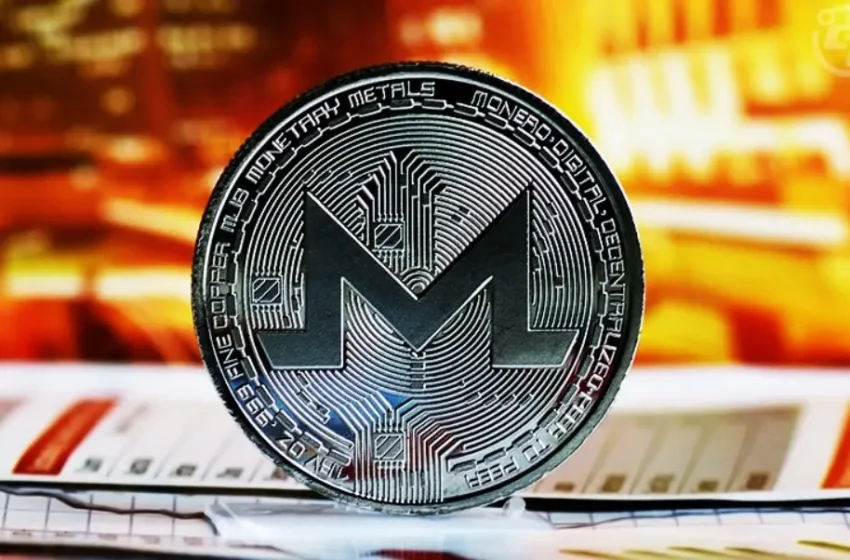Dubai Charities Begin Accepting Crypto Donations Under IACAD Initiative
Monero Faces Questions After Qubic Gains Temporary Network Control
(Originally posted on : Crypto News – iGaming.org )
Monero has long been recognized as one of the leading privacy-focused cryptocurrencies. But on August 11, the network faced an unusual event when Qubic, a newer blockchain project, briefly claimed more than 51 percent of Monero’s total mining power. The incident has left many wondering whether it was a true attack or simply an expensive demonstration.
Good to know
- A 51 percent attack means a single group controls enough mining power to alter blockchain activity.
- Monero is valued at over $6 billion, while Qubic’s market cap sits closer to $300 million.
- The event was tied to Qubic’s “Useful Proof of Work,” which differs from traditional mining.
How Qubic Pulled It Off
Qubic promotes itself as a network that doesn’t waste energy on simple mining. Instead, it directs computing power toward tasks like artificial intelligence. Its model, called Useful Proof of Work, aims to run decentralized AI systems while handling millions of transactions per second.
For the Monero network, Qubic redirected huge amounts of its mining resources, attracting miners away from standard pools. At one point, Qubic’s developers claimed they held control of more than half of Monero’s hash rate. With that much power, they were able to reorganize six blocks, meaning previously confirmed transactions were overwritten.
A Digital Tug-of-War
Reaching that point was not simple. Qubic’s attempt to capture a majority faced resistance. As it tried to gain ground, the project was hit with a week-long DDoS attack that knocked some connected services offline. Still, its mining pool kept going.
New players only. Exclusive 111% Welcome Bonus + 111 Free Spins
On August 11, Qubic switched to a strategy known as Selfish Mining. In this method, blocks are mined secretly and released later, creating a wave of orphan blocks in Monero’s chain. The tactic worked. Out of 122 blocks mined during that period, 63 were won by Qubic — comfortably above the 51 percent threshold.
Despite proving it could dominate, the team stopped short of taking full control. According to Qubic, doing so could have harmed Monero’s price. Independent specialists are now reviewing the numbers to confirm the extent of the takeover.
What It Means for Monero Users
For the average Monero holder, transactions continue as usual. The privacy features and speed remain intact. But the event showed that even a large network is vulnerable if miners shift to follow higher rewards elsewhere.
Qubic insists it wasn’t trying to damage Monero. Instead, it framed the episode as proof that its model works. The team argues that if Monero’s security eventually relies on Qubic miners, the ecosystem could create new revenue streams without undermining user privacy.
New players only. Exclusive 111% Welcome Bonus + 111 Free Spins
Different Views on the Event
Some in the crypto community question whether this was truly a successful 51 percent attack. A few developers argue Qubic may have just been unusually lucky in mining blocks. Others acknowledge that the strategy likely worked, but note the financial gain was limited compared to the costs.
Even so, the moment felt like a David-versus-Goliath story. A project with a fraction of Monero’s valuation managed to briefly dominate a network worth billions.
Lessons Going Forward
From Qubic’s perspective, three lessons came out of the experiment:
- Computing power can be used for more than just blockchain verification.
- Miners will always move where the rewards are strongest.
- Decentralized systems can absorb even heavy attacks without fully collapsing.
Monero still functions as the go-to privacy coin, but the debate sparked by Qubic has raised a new question: how safe is a network when smaller projects with enough incentives can temporarily tip the balance?







 Bitcoin
Bitcoin  Ethereum
Ethereum  Tether
Tether  XRP
XRP  USDC
USDC  Solana
Solana  TRON
TRON  Lido Staked Ether
Lido Staked Ether  Dogecoin
Dogecoin  Figure Heloc
Figure Heloc  Cardano
Cardano  WhiteBIT Coin
WhiteBIT Coin  Bitcoin Cash
Bitcoin Cash  Wrapped stETH
Wrapped stETH  Wrapped Bitcoin
Wrapped Bitcoin  USDS
USDS  Wrapped eETH
Wrapped eETH  Binance Bridged USDT (BNB Smart Chain)
Binance Bridged USDT (BNB Smart Chain)  Chainlink
Chainlink  Monero
Monero  LEO Token
LEO Token  WETH
WETH  Zcash
Zcash  Stellar
Stellar  Hyperliquid
Hyperliquid  Coinbase Wrapped BTC
Coinbase Wrapped BTC  Ethena USDe
Ethena USDe  Litecoin
Litecoin  Sui
Sui  Avalanche
Avalanche  Hedera
Hedera  sUSDS
sUSDS  Shiba Inu
Shiba Inu  USDT0
USDT0  Dai
Dai  Uniswap
Uniswap  Mantle
Mantle  PayPal USD
PayPal USD  Canton
Canton  Cronos
Cronos  World Liberty Financial
World Liberty Financial  Toncoin
Toncoin  Ethena Staked USDe
Ethena Staked USDe  Polkadot
Polkadot  USD1
USD1  Aave
Aave  Rain
Rain  Bitget Token
Bitget Token  MemeCore
MemeCore  OKB
OKB  Tether Gold
Tether Gold  Falcon USD
Falcon USD  Bittensor
Bittensor  NEAR Protocol
NEAR Protocol  Ethereum Classic
Ethereum Classic  Internet Computer
Internet Computer  Jito Staked SOL
Jito Staked SOL  Binance-Peg WETH
Binance-Peg WETH  Pi Network
Pi Network  BlackRock USD Institutional Digital Liquidity Fund
BlackRock USD Institutional Digital Liquidity Fund  Pepe
Pepe  Aster
Aster  syrupUSDC
syrupUSDC  Ethena
Ethena  Jupiter Perpetuals Liquidity Provider Token
Jupiter Perpetuals Liquidity Provider Token  HTX DAO
HTX DAO  PAX Gold
PAX Gold  Global Dollar
Global Dollar  Sky
Sky  Circle USYC
Circle USYC  KuCoin
KuCoin  Ripple USD
Ripple USD  BFUSD
BFUSD  Worldcoin
Worldcoin  Midnight
Midnight  Binance Bridged USDC (BNB Smart Chain)
Binance Bridged USDC (BNB Smart Chain)  syrupUSDT
syrupUSDT  Ondo
Ondo  Rocket Pool ETH
Rocket Pool ETH  Gate
Gate  Aptos
Aptos  Binance Staked SOL
Binance Staked SOL  Wrapped BNB
Wrapped BNB  POL (ex-MATIC)
POL (ex-MATIC)  Pump.fun
Pump.fun  Quant
Quant  Arbitrum
Arbitrum  Official Trump
Official Trump  Algorand
Algorand  Filecoin
Filecoin  Function FBTC
Function FBTC  Lombard Staked BTC
Lombard Staked BTC  Solv Protocol BTC
Solv Protocol BTC  Cosmos Hub
Cosmos Hub